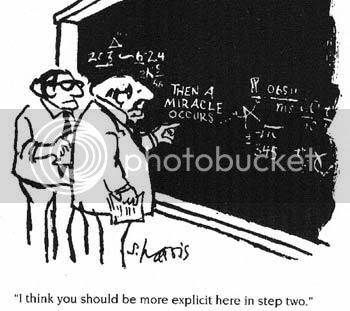- Joined
- Mar 6, 2008
- Messages
- 4,072
Put that paragraph in your hypothetical-logical-extension pipe and smoke it ERicJ. :doh:
My hypothetical-logical-extension was meant to debate the merits of the "tube" argument.
I like CR Par for the convenience of initial use, and SA Par for the real world accuracy.
That "paragraph" you refer to reminds me of this old cartoon:

You have this nice formula to calculate par except for the most interesting situations where you leave it up to no formula or data at all.
I'd bet that even the most experienced designers would still estimate par wrong on some newly designed holes. With SA Par there's no guesswork, the actual players' performance lets you know what par should be.